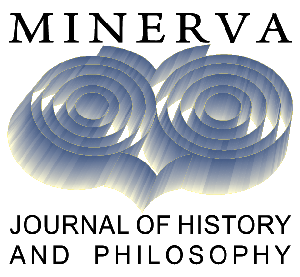Author: Alessandro DENTI
Abstract: The screen, today, is a luminous dart thrown into the multiform spaces of the city streaked by flows. Launched by invisible hands and demiurges, already ready on the spot of distractions and consumption, it lights up in the infinite passages of urban spaces loaded with colors, sounds, involving intensity without pause. Screens are everywhere today –and then, everywhere they bring with them a great question of the image, since this all-pervading diffusion of cut out areas that they project, of framed territories they represent, of illuminations that communicate, forces us to rethink the whole experience. of the vision, the different perspectives.
Keywords: Screen, image, rethink, vision, perspectives
The screen, a modern word, today is no longer either one or simple: by multiplying by so many different and proliferating forms, it reveals to us in the epoch of its dominion affinities and genealogies much broader and richer than those of its first attributions, of pure space of projection. By crossing the theme of screens, this study ended up incorporating and relaunching a broader theoretical reflection on a series of parallel themes, often of profound philosophical or speculative elaboration already developed by a past and present tradition, such as those of image, vision, view, as well as inevitably of imagination and representation. The “global screen”[1] calls into question a sort of “infinite visual reproduction”, whose affirmation, in spite of often apparently trivial occurrences and results offered by mass entertainment, instead touches much deeper problems in the order of contemporary perception, of its transformations so pervasive of the way of seeing, of his changed ability to look and represent.
Our research deals with today’s way of seeing and feeling, dazzled by screened lighting at every step inside the talking metropolis. A consequence immediately follows from what we have just said, and that is that this same research is inevitably called to act according to a basic anthropological perspective, that is, moving through a broader paradigm and at the same time more elastic than those offered by disciplines such as, for example, semiotics, aesthetics, the sociology of communication itself. This, for the obvious reason already indicated in the above lines, namely the existence of a deeper and more essential involvement implied, in the contemporary scenario, by the widespread use of screen representations, by the current and transversal practice of video everywhere. In fact, the era of full-blown screens stands as the time of an experience enduring and multifaceted, relating to seeing, appearing, making appear; an experience on the level of symbolic values, as much as an experience on the level of practices; and as such, an adventure not only of language, signs, objects, but also of behaviors and beliefs. And therefore, well ascribable to a more coherently anthropological reading plan, which is also capable of overcoming narrow disciplinary boundaries, in order to place side by side and overlap, within itself, multiple and different areas of observation. It will not be a strictly “ethnological” “fieldwork” in the manner of a certain classical, official anthropology, but rather a critical path developed around the idea and theory of a certain way of “seeing framed”: first rethought through a recognition of theoretical research, as a complex background of conceptual reference, and then practiced through paths of direct observation of the phenomena, those emerging in the new hyper-technological mass territory. A type of direct observation that, to this anthropological background, will try to combine an approach we would call phenomenological, by which we mean a method of reading and understanding reality much more intimately based on the work of a direct description, subjectively involved in its object of observation and carried on “things themselves”, on tangible and closer experiences, than on statistical parameters relating to quantitative survey methodologies. By saying to see framed we have in some way, with a single condensed expression, perhaps summarized the nuclear object of our research. In fact, the screen can be properly conceived as the elastic and changeable design of a “seeing inside a picture-frame”, in whose peculiar experience different moments and phenomena are already distinguishable: both the strength of the vision and the work of the picture- boundary, both the static thrust of the off-screen, which acts as a negative that makes a difference, thus giving a space and a sense to the inside-screen. Let us immediately report, even if only for a moment, these first theoretical indications to the contemporary tecnome-tropolitano habitat: a landscape of luminous and communicative montages, in which the dialectic between frame, vision and the surrounding-external space nests indefinitely, folding and unfolding in countless times and turns, in front of the gaze. In the first instance, it is a question of being accompanied, as a paradigmatic starting point for our entire adventure, by a coherent framework of more general critical references placed at its foundation, taken from contemporary theoretical literature and capable of precisely accounting for this peculiar fluid scenario, highly communicative and dynamic in the game of apparitions-stimulus in a visual formula, with a strong cognitive grip and interactive pretension.
[1] “Global screen” sounds like a literal translation of the rather recent text L’Ecran globale, Points, Paris, 2007, by the authors G. LIPOVETSKY and J. SERROY, reference to our subject is obligatory, in this first phase of presentation, a book with good ambitions of systematicity on the subject, and marked by the fundamental logical relation of the screen to “globality”, an almost obvious concept in era of global communication and digital convergence. However, we will return later to refer to this text again, in more specific questions.
